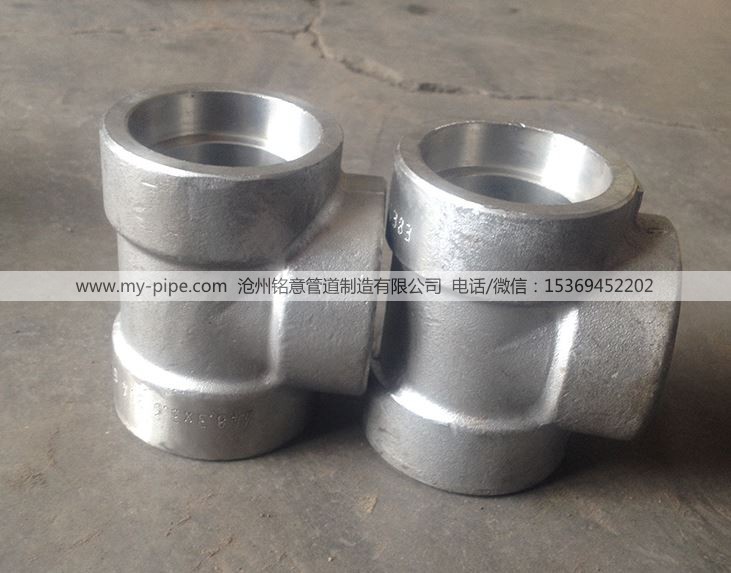
Method for making forged tees
According to the different varieties and requirements of the pipe fittings, the forging pipe fittings are mainly made by die forging, free forging and cutting forming. The universal die forging method has large flying edges and consumes materials. In order to reduce material consumption, some pipe fittings manufacturers begin to adopt non flying forming technology, and achieve better results. This section mainly introduces the manufacturing process of die forging, free forging and cutting forming of pipe fittings.
Die forging
The small size pipe fittings such as the three way, the four way and the elbow of the socket, welding and thread are relatively complex in shape and should be manufactured by die forging.
The blanks used for die forging shall be rolled sections, such as bars, thick walled tubes or sheets. When the ingot is used as raw material, the ingot shall be rolled into bars or forged before being used as a blank for die forging, so as to eliminate segregation, porosity and other defects in the ingot.
Blank after heating in mold forging (as the case may be different, after initial forging and forging), the metal flow and pressure to fill the die cavity; after forging blank as a flash, but also after the rush to flash the remaining material steps, thus completing all forging work.
Free forging
Tubes made of special shapes or fittings which are not suitable for die forging can be manufactured by free forging. The free forging shall forge the approximate shape of the pipe; as of the three pass, the branch shall be forged.
Cutting processing
On some fittings for the cylindrical shape by the bar or thick wall pipe directly cutting processes, such as couplings, fittings and so on. During processing, the fiber flow direction of the metal material should be approximately parallel to the axial direction of the fittings. The three -, four - way, elbow and fittings shall not be machined by direct cutting of bars.